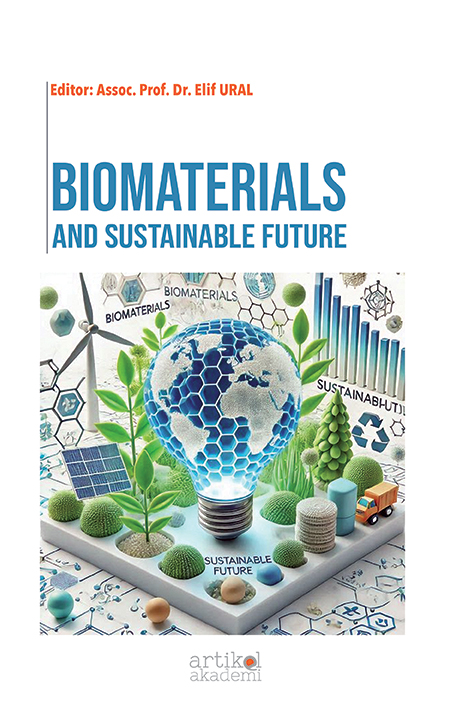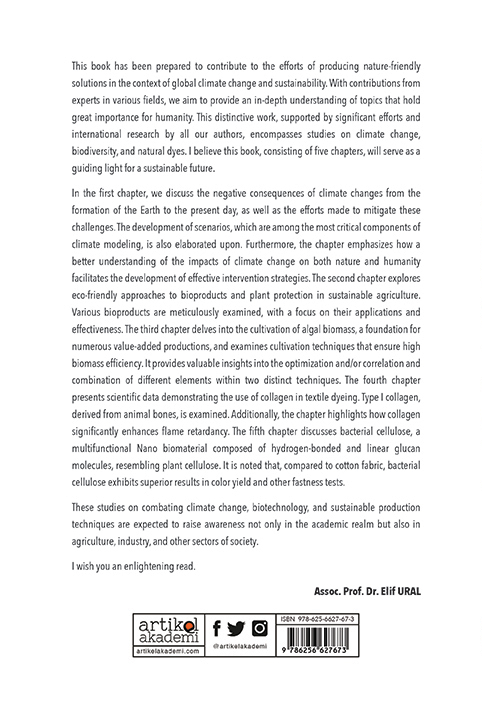

This book has been prepared to contribute to the efforts of producing nature-friendly solutions in the context of global climate change and sustainability. With contributions from experts in various fields, we aim to provide an in-depth understanding of topics that hold great importance for humanity. This distinctive work, supported by significant efforts and international research by all our authors, encompasses studies on climate change, biodiversity, and natural dyes. I believe this book, consisting of five chapters, will serve as a guiding light for a sustainable future.
In the first chapter, we discuss the negative consequences of climate changes from the formation of the Earth to the present day, as well as the efforts made to mitigate these challenges. The development of scenarios, which are among the most critical components of climate modeling, is also elaborated upon. Furthermore, the chapter emphasizes how a better understanding of the impacts of climate change on both nature and humanity facilitates the development of effective intervention strategies. The second chapter explores eco-friendly approaches to bioproducts and plant protection in sustainable agriculture. Various bioproducts are meticulously examined, with a focus on their applications and effectiveness. The third chapter delves into the cultivation of algal biomass, a foundation for numerous value-added productions, and examines cultivation techniques that ensure high biomass efficiency. It provides valuable insights into the optimization and/or correlation and combination of different elements within two distinct techniques. The fourth chapter presents scientific data demonstrating the use of collagen in textile dyeing. Type I collagen, derived from animal bones, is examined. Additionally, the chapter highlights how collagen significantly enhances flame retardancy. The fifth chapter discusses bacterial cellulose, a multifunctional Nano biomaterial composed of hydrogen-bonded and linear glucan molecules, resembling plant cellulose. It is noted that, compared to cotton fabric, bacterial cellulose exhibits superior results in color yield and other fastness tests.
These studies on combating climate change, biotechnology, and sustainable production techniques are expected to raise awareness not only in the academic realm but also in agriculture, industry, and other sectors of society.
I wish you an enlightening read.
Assoc. Prof. Dr. Elif URAL